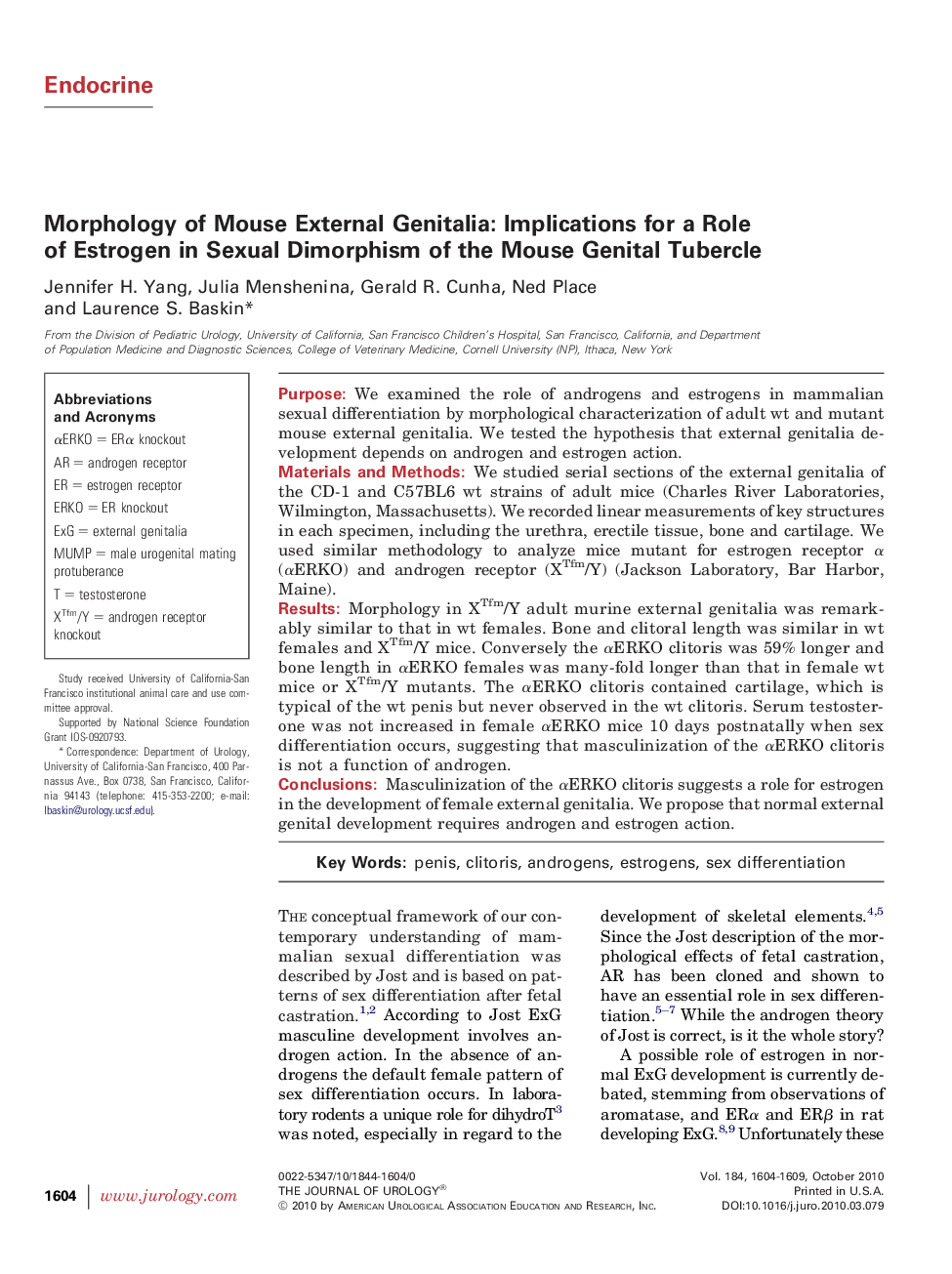| Article ID | Journal | Published Year | Pages | File Type |
|---|---|---|---|---|
| 3867538 | The Journal of Urology | 2010 | 6 Pages |
PurposeWe examined the role of androgens and estrogens in mammalian sexual differentiation by morphological characterization of adult wt and mutant mouse external genitalia. We tested the hypothesis that external genitalia development depends on androgen and estrogen action.Materials and MethodsWe studied serial sections of the external genitalia of the CD-1 and C57BL6 wt strains of adult mice (Charles River Laboratories, Wilmington, Massachusetts). We recorded linear measurements of key structures in each specimen, including the urethra, erectile tissue, bone and cartilage. We used similar methodology to analyze mice mutant for estrogen receptor α (αERKO) and androgen receptor (XTfm/Y) (Jackson Laboratory, Bar Harbor, Maine).ResultsMorphology in XTfm/Y adult murine external genitalia was remarkably similar to that in wt females. Bone and clitoral length was similar in wt females and XTfm/Y mice. Conversely the αERKO clitoris was 59% longer and bone length in αERKO females was many-fold longer than that in female wt mice or XTfm/Y mutants. The αERKO clitoris contained cartilage, which is typical of the wt penis but never observed in the wt clitoris. Serum testosterone was not increased in female αERKO mice 10 days postnatally when sex differentiation occurs, suggesting that masculinization of the αERKO clitoris is not a function of androgen.ConclusionsMasculinization of the αERKO clitoris suggests a role for estrogen in the development of female external genitalia. We propose that normal external genital development requires androgen and estrogen action.
